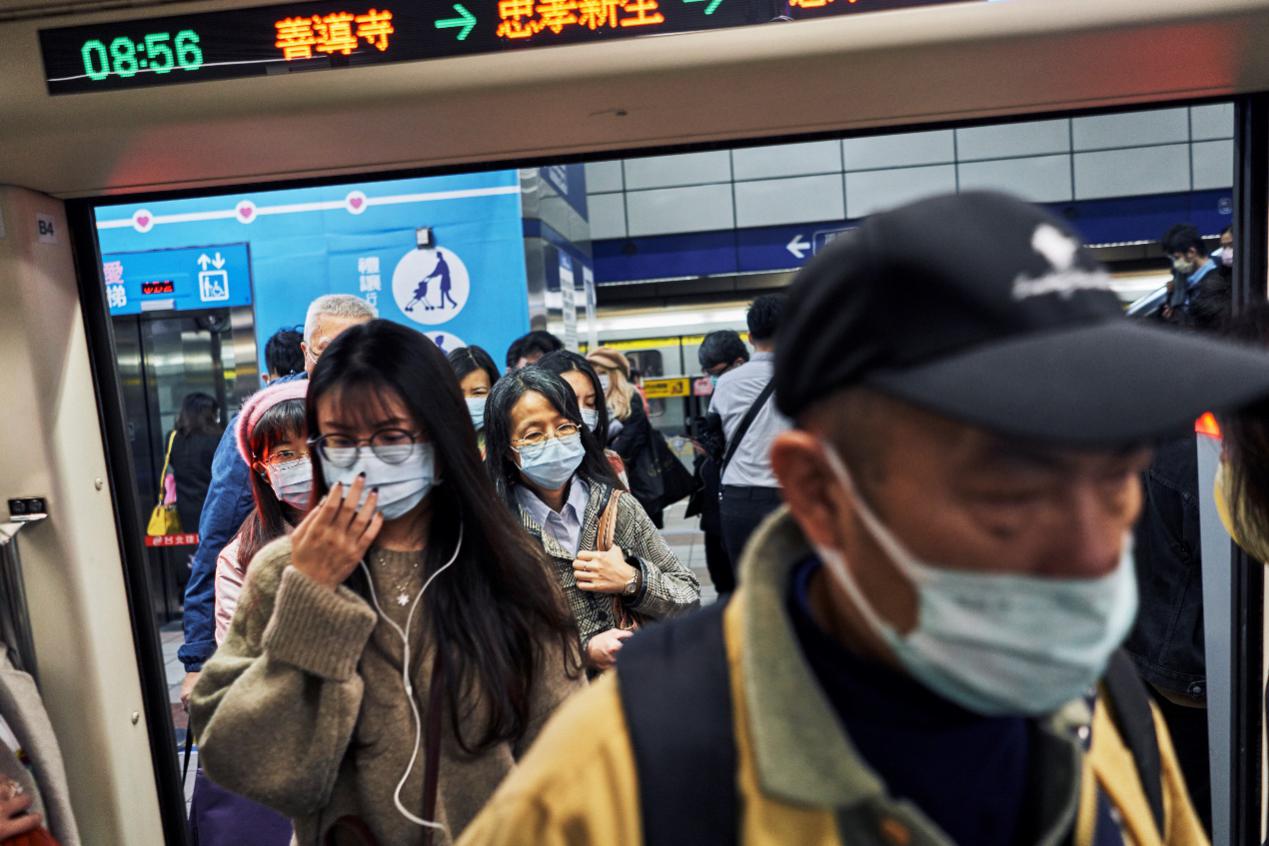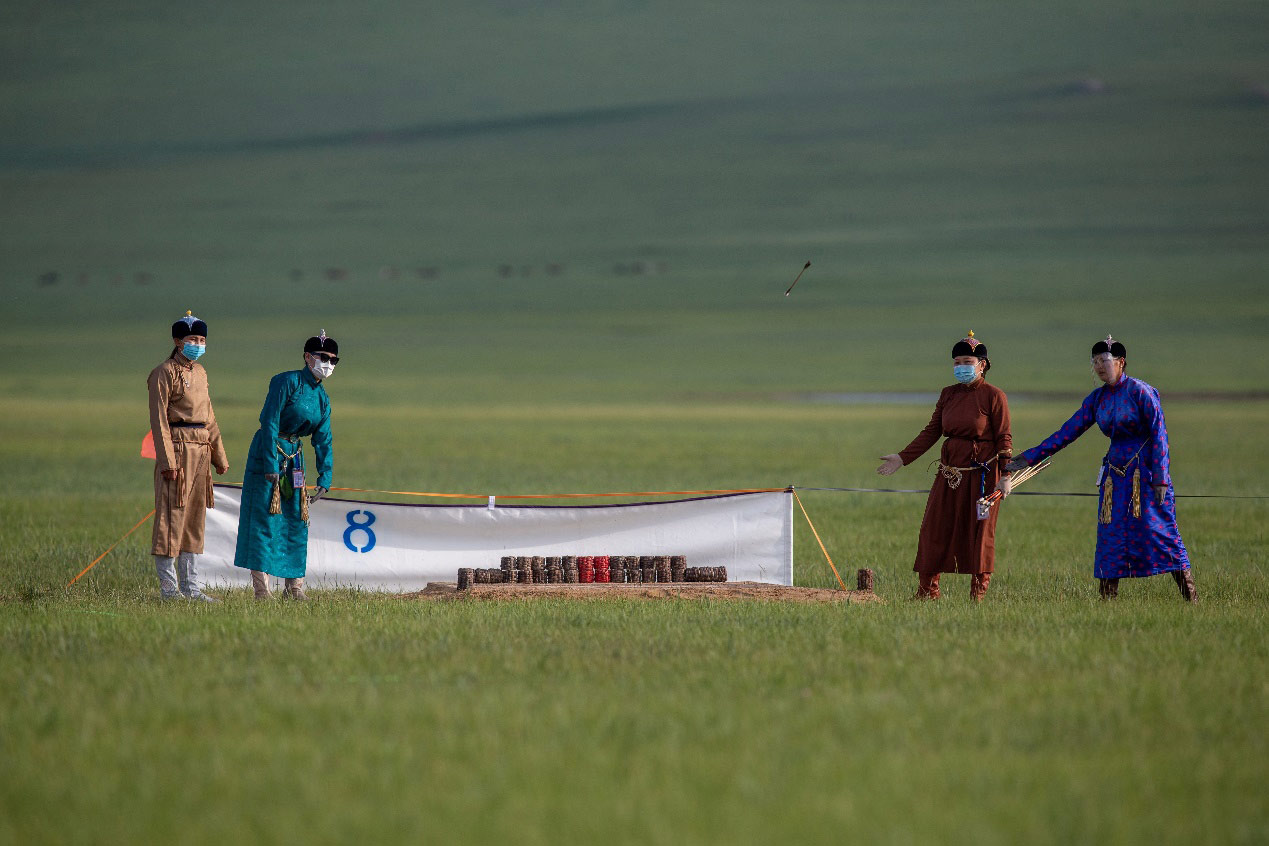亞洲許多國(guó)家和地區(qū)面對(duì)新冠疫情采取的響應(yīng)措施十分令人敬佩。
早期的出行禁令,、大規(guī)模檢測(cè),、密切接觸者跟蹤和嚴(yán)格的隔離措施,幫助中國(guó)臺(tái)灣,、蒙古國(guó)和越南避免了疫情大規(guī)模爆發(fā),,并且僅出現(xiàn)了少數(shù)新冠肺炎死亡病例。
在抗擊新冠疫情方面的另外一個(gè)模范國(guó)家泰國(guó),,最近新冠肺炎確診病例激增,,這表明即使在能夠控制病毒傳播的國(guó)家,也可能出現(xiàn)疫情反復(fù),。
從2月至12月中旬,,泰國(guó)的總確診病例超過(guò)4,000例,死亡60例,,每日只有零星新增病例,。12月19日,泰國(guó)新增19例確診病例,;但12月20日,,新增確診病例達(dá)到576例,是泰國(guó)之前單日新增確診病例最高紀(jì)錄的三倍以上,。
泰國(guó)政府當(dāng)局封鎖了此輪疫情的中心沙沒沙空府,,正在對(duì)該省和周邊地區(qū)數(shù)以萬(wàn)計(jì)的居民進(jìn)行檢測(cè)。沙沒沙空府周邊許多地區(qū)也出現(xiàn)了新增病例,。
為了防止病毒傳播,,泰國(guó)再次加強(qiáng)限制措施,并警告如果確診人數(shù)繼續(xù)增加,,可能有必要實(shí)行全國(guó)封鎖,。截至12月28日,泰國(guó)的總確診病例為6,285例,,依舊遠(yuǎn)低于全球大部分地區(qū),,而且死亡病例只有60例。但此輪疫情的突然爆發(fā)在提醒著我們,,疫情可能迅速發(fā)生變化,。
中國(guó)臺(tái)灣
10月下旬,成千上萬(wàn)人走上臺(tái)北街頭擁抱,、歡呼,、揮舞彩虹旗,慶祝臺(tái)灣一年一度的LGBTQ驕傲游行,。此前兩天,,臺(tái)灣已連續(xù)200天保持本土新冠肺炎零感染記錄,。
早期的出行禁令和保證本地有充足的口罩供應(yīng),是中國(guó)臺(tái)灣成功控制新冠疫情的關(guān)鍵,。12月22日,,一家新西蘭航空公司的飛行員違反隔離規(guī)定,造成三人感染,,這是中國(guó)臺(tái)灣自4月12日以來(lái)首次出現(xiàn)本土感染病例,。(作為應(yīng)對(duì)措施,臺(tái)灣頒布了對(duì)航空公司機(jī)組人員的新限制規(guī)定,。)
臺(tái)灣地區(qū)中央流行疫情指揮中心(CECC)會(huì)每天公布新冠檢測(cè)和新增病例的詳細(xì)信息,,包括每一位患者的癥狀、出行記錄和此前是否抗體檢測(cè)呈陽(yáng)性等信息,。

臺(tái)灣省應(yīng)對(duì)新冠疫情的做法總結(jié)起來(lái)就是先發(fā)制人,、快速響應(yīng)潛在的疾病傳播,。
1月22日,臺(tái)灣出現(xiàn)首例確診病例的次日,,臺(tái)灣地區(qū)政府開始向便利店發(fā)放口罩,,每周提供100萬(wàn)個(gè)口罩,并告訴民眾“保持冷靜,,無(wú)需搶購(gòu)口罩”,。
在1月底之前,臺(tái)灣省禁止出口口罩,,限制出境旅客可以攜帶的口罩?jǐn)?shù)量,,并規(guī)定了每一位民眾每次可以購(gòu)買的口罩?jǐn)?shù)量。當(dāng)?shù)卣€規(guī)定了口罩價(jià)格,,以避免投機(jī)分子哄抬價(jià)格,。
在新冠疫情爆發(fā)之初,東亞各地民眾很快遵照政府的建議,,戴上了口罩,。但美國(guó)直到4月才有所行動(dòng),當(dāng)時(shí)美國(guó)疾病預(yù)防控制中心(CDC)建議所有美國(guó)民眾在公共場(chǎng)合佩戴口罩,。CDC此前曾表示只有醫(yī)護(hù)人員和患者需要戴口罩,。
蒙古國(guó)
蒙古國(guó)未出現(xiàn)任何新冠肺炎死亡病例。截至12月28日,,地處東北亞的蒙古國(guó)僅有約1,100例新冠肺炎確診病例,。蒙古國(guó)的感染病例數(shù)量較少,得益于早期的封鎖措施,、嚴(yán)格的出行禁令和對(duì)回國(guó)人員更長(zhǎng)的強(qiáng)制隔離期,。

1月下旬,,為了防止疫情傳播,蒙古國(guó)宣布所有學(xué)校和幼兒園停課,,限制跨區(qū)域出行和與中國(guó)的跨境出行,,盡管當(dāng)時(shí)蒙古國(guó)并沒有出現(xiàn)確診病例。
一個(gè)半月以后的3月10日,,蒙古國(guó)出現(xiàn)了首例新冠確診病例,,一名從法國(guó)前往蒙古國(guó)的男性被檢測(cè)出抗體呈陽(yáng)性。次日,,世界衛(wèi)生組織(WHO)宣布新冠疫情為全球大流行,。
3月12日,蒙古國(guó)成為首批關(guān)閉邊境的國(guó)家之一,,除了回國(guó)公民以外,,禁止國(guó)際出行;但回國(guó)公民在入境后需要隔離三周,。
蒙古國(guó)總理當(dāng)時(shí)表示,,蒙古國(guó)將繼續(xù)采取限制措施直到“有疫苗可用為止”。
越南
今年夏天,,海濱城市峴港突然爆發(fā)的疫情幾乎讓越南堪稱典范的疫情防控工作功虧一簣,。在7月下旬峴港有人被檢測(cè)出抗體呈陽(yáng)性之前,越南已經(jīng)連續(xù)99天保持本土確診病例零增長(zhǎng),,并且未出現(xiàn)任何與新冠肺炎有關(guān)的死亡病例,。
為了控制疫情爆發(fā),避免情況失控,,當(dāng)?shù)卣芸旆怄i了該市,,要求曾前往峴港的所有人居家隔離14天,并進(jìn)行大范圍檢測(cè)和密切接觸者跟蹤,。這些措施取得了效果:8月每日新增病例持續(xù)減少,,至8月30日實(shí)現(xiàn)零新增病例。
截至12月28日,,越南共有1,441例新冠確診病例和35例死亡病例,。早期的出行禁令,、在確診病例仍相對(duì)較少的情況下實(shí)行的嚴(yán)格的封鎖措施以及備受贊譽(yù)的檢測(cè)和隔離制度,幫助越南避免了大規(guī)模疫情爆發(fā),,否則越南的醫(yī)療體系必將不堪重負(fù),。

與蒙古國(guó)和中國(guó)臺(tái)灣一樣,,越南相對(duì)較早就實(shí)行了出行禁令,,在3月22日停飛了所有入境航班。
越南還在2月3日關(guān)閉了所有學(xué)校,,在3月16日出臺(tái)了強(qiáng)制佩戴口罩的規(guī)定,。越南之前應(yīng)對(duì)SARS和H1N1等流行病的經(jīng)驗(yàn),促使政府迅速行動(dòng)起來(lái)并保持透明,,以盡量減少確診人數(shù),。政府當(dāng)局檢測(cè)了數(shù)以十萬(wàn)計(jì)的民眾,利用密切接觸者跟蹤確定與確診病例有過(guò)接觸的人群,,還設(shè)立了由政府運(yùn)營(yíng)的隔離區(qū),,可以一次性容納數(shù)萬(wàn)人,并保證有傳播病毒風(fēng)險(xiǎn)的患者不會(huì)無(wú)視居家隔離規(guī)定,。
4月1日,,越南確診病例總?cè)藬?shù)達(dá)到204例,政府宣布執(zhí)行全國(guó)封鎖,,命令所有非必要企業(yè)停工,,并要求全國(guó)民眾居家隔離15天。
越南成功控制住了國(guó)內(nèi)的疫情,,使其能夠安全地重啟國(guó)內(nèi)經(jīng)濟(jì),,在第三季度實(shí)現(xiàn)了經(jīng)濟(jì)正增長(zhǎng)。經(jīng)濟(jì)學(xué)家表示,,越南可能是除中國(guó)以外,,2020年唯一一個(gè)實(shí)現(xiàn)經(jīng)濟(jì)正增長(zhǎng)的亞洲主要經(jīng)濟(jì)體。(財(cái)富中文網(wǎng))
譯者:劉進(jìn)龍
審校:汪皓
亞洲許多國(guó)家和地區(qū)面對(duì)新冠疫情采取的響應(yīng)措施十分令人敬佩,。
早期的出行禁令,、大規(guī)模檢測(cè)、密切接觸者跟蹤和嚴(yán)格的隔離措施,,幫助中國(guó)臺(tái)灣,、蒙古國(guó)和越南避免了疫情大規(guī)模爆發(fā),并且僅出現(xiàn)了少數(shù)新冠肺炎死亡病例,。
在抗擊新冠疫情方面的另外一個(gè)模范國(guó)家泰國(guó),,最近新冠肺炎確診病例激增,,這表明即使在能夠控制病毒傳播的國(guó)家,也可能出現(xiàn)疫情反復(fù),。
從2月至12月中旬,,泰國(guó)的總確診病例超過(guò)4,000例,死亡60例,,每日只有零星新增病例。12月19日,,泰國(guó)新增19例確診病例,;但12月20日,新增確診病例達(dá)到576例,,是泰國(guó)之前單日新增確診病例最高紀(jì)錄的三倍以上,。
泰國(guó)政府當(dāng)局封鎖了此輪疫情的中心沙沒沙空府,正在對(duì)該省和周邊地區(qū)數(shù)以萬(wàn)計(jì)的居民進(jìn)行檢測(cè),。沙沒沙空府周邊許多地區(qū)也出現(xiàn)了新增病例,。
為了防止病毒傳播,泰國(guó)再次加強(qiáng)限制措施,,并警告如果確診人數(shù)繼續(xù)增加,,可能有必要實(shí)行全國(guó)封鎖。截至12月28日,,泰國(guó)的總確診病例為6,285例,,依舊遠(yuǎn)低于全球大部分地區(qū),而且死亡病例只有60例,。但此輪疫情的突然爆發(fā)在提醒著我們,,疫情可能迅速發(fā)生變化。
中國(guó)臺(tái)灣
10月下旬,,成千上萬(wàn)人走上臺(tái)北街頭擁抱,、歡呼、揮舞彩虹旗,,慶祝臺(tái)灣一年一度的LGBTQ驕傲游行,。此前兩天,臺(tái)灣已連續(xù)200天保持本土新冠肺炎零感染記錄,。
早期的出行禁令和保證本地有充足的口罩供應(yīng),,是中國(guó)臺(tái)灣成功控制新冠疫情的關(guān)鍵。12月22日,,一家新西蘭航空公司的飛行員違反隔離規(guī)定,,造成三人感染,這是中國(guó)臺(tái)灣自4月12日以來(lái)首次出現(xiàn)本土感染病例,。(作為應(yīng)對(duì)措施,,臺(tái)灣頒布了對(duì)航空公司機(jī)組人員的新限制規(guī)定,。)
臺(tái)灣地區(qū)中央流行疫情指揮中心(CECC)會(huì)每天公布新冠檢測(cè)和新增病例的詳細(xì)信息,包括每一位患者的癥狀,、出行記錄和此前是否抗體檢測(cè)呈陽(yáng)性等信息,。
2020年12月2日,臺(tái)灣省臺(tái)北市,,在火車站的通勤者戴著口罩,。臺(tái)灣許多地區(qū)依舊要求戴口罩,包括在公共交通工具上,。
臺(tái)灣省應(yīng)對(duì)新冠疫情的做法總結(jié)起來(lái)就是先發(fā)制人,、快速響應(yīng)潛在的疾病傳播。
1月22日,,臺(tái)灣出現(xiàn)首例確診病例的次日,,臺(tái)灣地區(qū)政府開始向便利店發(fā)放口罩,每周提供100萬(wàn)個(gè)口罩,,并告訴民眾“保持冷靜,,無(wú)需搶購(gòu)口罩”。
在1月底之前,,臺(tái)灣省禁止出口口罩,,限制出境旅客可以攜帶的口罩?jǐn)?shù)量,并規(guī)定了每一位民眾每次可以購(gòu)買的口罩?jǐn)?shù)量,。當(dāng)?shù)卣€規(guī)定了口罩價(jià)格,,以避免投機(jī)分子哄抬價(jià)格。
在新冠疫情爆發(fā)之初,,東亞各地民眾很快遵照政府的建議,,戴上了口罩。但美國(guó)直到4月才有所行動(dòng),,當(dāng)時(shí)美國(guó)疾病預(yù)防控制中心(CDC)建議所有美國(guó)民眾在公共場(chǎng)合佩戴口罩,。CDC此前曾表示只有醫(yī)護(hù)人員和患者需要戴口罩。
蒙古國(guó)
蒙古國(guó)未出現(xiàn)任何新冠肺炎死亡病例,。截至12月28日,,地處東北亞的蒙古國(guó)僅有約1,100例新冠肺炎確診病例。蒙古國(guó)的感染病例數(shù)量較少,,得益于早期的封鎖措施,、嚴(yán)格的出行禁令和對(duì)回國(guó)人員更長(zhǎng)的強(qiáng)制隔離期。
1月下旬,,為了防止疫情傳播,,蒙古國(guó)宣布所有學(xué)校和幼兒園停課,限制跨區(qū)域出行和與中國(guó)的跨境出行,盡管當(dāng)時(shí)蒙古國(guó)并沒有出現(xiàn)確診病例,。
一個(gè)半月以后的3月10日,,蒙古國(guó)出現(xiàn)了首例新冠確診病例,一名從法國(guó)前往蒙古國(guó)的男性被檢測(cè)出抗體呈陽(yáng)性,。次日,,世界衛(wèi)生組織(WHO)宣布新冠疫情為全球大流行。
3月12日,,蒙古國(guó)成為首批關(guān)閉邊境的國(guó)家之一,,除了回國(guó)公民以外,禁止國(guó)際出行,;但回國(guó)公民在入境后需要隔離三周,。
蒙古國(guó)總理當(dāng)時(shí)表示,蒙古國(guó)將繼續(xù)采取限制措施直到“有疫苗可用為止”,。
越南
今年夏天,海濱城市峴港突然爆發(fā)的疫情幾乎讓越南堪稱典范的疫情防控工作功虧一簣,。在7月下旬峴港有人被檢測(cè)出抗體呈陽(yáng)性之前,,越南已經(jīng)連續(xù)99天保持本土確診病例零增長(zhǎng),并且未出現(xiàn)任何與新冠肺炎有關(guān)的死亡病例,。
為了控制疫情爆發(fā),,避免情況失控,當(dāng)?shù)卣芸旆怄i了該市,,要求曾前往峴港的所有人居家隔離14天,,并進(jìn)行大范圍檢測(cè)和密切接觸者跟蹤。這些措施取得了效果:8月每日新增病例持續(xù)減少,,至8月30日實(shí)現(xiàn)零新增病例,。
截至12月28日,越南共有1,441例新冠確診病例和35例死亡病例,。早期的出行禁令,、在確診病例仍相對(duì)較少的情況下實(shí)行的嚴(yán)格的封鎖措施以及備受贊譽(yù)的檢測(cè)和隔離制度,幫助越南避免了大規(guī)模疫情爆發(fā),,否則越南的醫(yī)療體系必將不堪重負(fù),。
與蒙古國(guó)和中國(guó)臺(tái)灣一樣,越南相對(duì)較早就實(shí)行了出行禁令,,在3月22日停飛了所有入境航班,。
越南還在2月3日關(guān)閉了所有學(xué)校,在3月16日出臺(tái)了強(qiáng)制佩戴口罩的規(guī)定,。越南之前應(yīng)對(duì)SARS和H1N1等流行病的經(jīng)驗(yàn),,促使政府迅速行動(dòng)起來(lái)并保持透明,以盡量減少確診人數(shù)。政府當(dāng)局檢測(cè)了數(shù)以十萬(wàn)計(jì)的民眾,,利用密切接觸者跟蹤確定與確診病例有過(guò)接觸的人群,,還設(shè)立了由政府運(yùn)營(yíng)的隔離區(qū),可以一次性容納數(shù)萬(wàn)人,,并保證有傳播病毒風(fēng)險(xiǎn)的患者不會(huì)無(wú)視居家隔離規(guī)定,。
4月1日,越南確診病例總?cè)藬?shù)達(dá)到204例,,政府宣布執(zhí)行全國(guó)封鎖,,命令所有非必要企業(yè)停工,并要求全國(guó)民眾居家隔離15天,。
越南成功控制住了國(guó)內(nèi)的疫情,,使其能夠安全地重啟國(guó)內(nèi)經(jīng)濟(jì),在第三季度實(shí)現(xiàn)了經(jīng)濟(jì)正增長(zhǎng),。經(jīng)濟(jì)學(xué)家表示,,越南可能是除中國(guó)以外,2020年唯一一個(gè)實(shí)現(xiàn)經(jīng)濟(jì)正增長(zhǎng)的亞洲主要經(jīng)濟(jì)體,。(財(cái)富中文網(wǎng))
譯者:劉進(jìn)龍
審校:汪皓
Many of the Asian countries with the most admirable COVID-19 responses share borders with and receive frequent travelers from China, the original epicenter of the coronavirus pandemic.
A combination of early travel restrictions, mass testing, contact tracing, and strict quarantine measures helped Taiwan, Mongolia, and Vietnam avoid mass outbreaks and keep coronavirus deaths low.
The recent surge in COVID-19 case numbers in Thailand, another model country in coronavirus outbreak management, shows how even countries with a handle on the spread of the virus can be set back.
In mid-December, Thailand had recorded more than 4,000 total cases and 60 deaths since February, and daily new cases were low. On Dec. 19, Thailand reported 19 new cases; on Dec. 20, the figure shot up to 576, more than three times as high as the country’s previous daily record for highest new case tally.
Authorities have locked down Samut Sakhon, the province where the outbreak is centered, and are testing tens of thousands of people in Samut Sakhon and surrounding regions, many of which have reported new cases.
Thailand is ramping up restrictions again to prevent the spread of the virus and warned that a nationwide lockdown may be necessary if cases continue to rise. The country’s total COVID-19 cases as of Dec. 28 stood at 6,285, still extremely low, relative to much of the world, and the number of deaths remains at 60. But the sudden outbreak is a stark reminder of how quickly things can change when it comes to the coronavirus.
Taiwan
In late October, thousands of people thronged the streets of Taipei, hugging, cheering, and waving rainbow flags to celebrate Taiwan’s annual LGBTQ pride parade. Two days earlier, Taiwan reached the milestone of 200 consecutive days without a single domestically transmitted COVID-19 case.
Early travel restrictions and a singular focus on ensuring an adequate domestic supply of face masks were key to the management of COVID-19 in Taiwan, which on Dec. 22 reported its first locally transmitted coronavirus case since April 12 after a New Zealand airline pilot violated quarantine rules and infected three people. (In response, Taiwan instituted new restrictions on airline crews.)
Taiwan’s Central Epidemic Command Center (CECC) publishes detailed daily accounts of COVID-19 testing and new cases, including information about each person’s symptoms, travel history, and whether they had tested positive for antibodies.
Taiwan’s handling of COVID-19 epitomizes a swift, preemptive response to potential disease spread.
On Jan. 22, the day after Taiwan’s first confirmed case, Taiwan’s government began distributing face masks to convenience stores, releasing 1 million masks per week and advising people “to remain calm and not rush to buy them.”
Before January was over, Taiwan had banned exports of face masks, placed limits on the number of masks that outbound travelers could take with them, and capped the number of masks each person could buy at one time. The government also fixed the price of face masks to prevent opportunistic vendors from price gouging.
People across East Asia were quick to don face masks at the outset of the coronavirus outbreak, and their governments encouraged them to do so. The U.S. would not follow suit until April, when the Centers for Disease Control and Prevention (CDC) recommended that all Americans wear face coverings in public. (Previously, the CDC had said only medical workers and sick people should wear face masks.)
Mongolia
Mongolia has not recorded any deaths from the coronavirus. As of Dec. 28, the northeast Asian nation had recorded around 1,100 COVID-19 cases. The country kept its cases low with early lockdown measures, strict travel bans, and a longer than usual mandatory quarantine period for returnees.
In late January, Mongolia closed all schools and kindergartens, restricted interregional travel, and limited cross-border travel with China to limit the spread of the coronavirus—even though it had zero confirmed COVID-19 cases at that time.
Mongolia recorded its first coronavirus case one and a half months later, on March 10, when a man traveling to Mongolia from France tested positive. The next day, the World Health Organization (WHO) classified COVID-19 as a global pandemic.
Mongolia on March 12 became one of the first countries to close its borders to international travel, apart from repatriated citizens; the latter were required to quarantine for three weeks after arrival.
The Prime Minister said at the time that the country would keep the restrictions in place “until a vaccine becomes available.”
Vietnam
Over the summer, a surprise coronavirus outbreak in the beach city of Da Nang threatened to derail Vietnam’s model coronavirus response. Vietnam had not recorded a locally transmitted case in 99 days—and had not recorded any coronavirus-related deaths—when people started testing positive in Da Nang in late July.
The government quickly shut the city’s borders, told everyone who had traveled to Da Nang that they had to quarantine at home for 14 days, and carried out widespread testing and contact tracing to clamp down on the outbreak before it spiraled out of control. It worked: Daily new case numbers dropped throughout August, reaching zero on Aug. 30.
As of Dec. 28, Vietnam had recorded 1,441 cases and 35 deaths from the coronavirus. Early travel bans, a strict lockdown when cases were still relatively low, and a much-lauded testing and quarantine system helped Vietnam avoid large disease outbreaks, which could have overburdened the nation’s medical system.
Like Mongolia and Taiwan, Vietnam imposed travel restrictions relatively early and in immediate response to coronavirus developments abroad, suspending all inbound flights on March 22.
Vietnam also closed all schools on Feb. 3 and made mask-wearing mandatory on March 16. The country’s previous experiences with viral outbreaks of SARS and H1N1 prompted the government to act quickly and with transparency to ensure it could keep cases low. Authorities tested hundreds of thousands of people, using contact tracing to determine who had interacted with positive coronavirus cases, and set up government-run quarantine camps that housed tens of thousands at a time and ensured that people at risk of spreading the virus weren’t flouting stay-at-home rules.
And then on April 1—when Vietnam had a total of 204 confirmed cases—the government imposed a national lockdown, ordering all nonessential businesses to close and telling residents nationwide to stay at home for 15 days.
Vietnam’s clampdowns on the spread of the coronavirus within its borders let it safely reopen the domestic economy, which helped it reach positive economic growth in the third quarter. Economists say Vietnam will likely be the only major Asian economy besides China to record positive economic growth in 2020.






